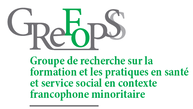Who is this tool designed for?
This tool is designed to support health and social services system decision-makers, managers, and professionals who are providing services to people from official language minority communities (OLMCs) and want, or are required to provide these services in the user's preferred official language.
What is the purpose of the tool?
The tool encourages reflection on professional practices that could be put in place to promote the integration of social and health services for people in minority language situations. It also allows the selfevaluation of the organization’s existing resources and prioritization of objectives. This will help to identify levers for action and develop an action plan to implement concrete measures. These measures might involve improving internal and external coordination mechanisms (such as the recruitment and retention of minority official language or bilingual human resources); modifying organization reception practices for the senior population in linguistic minority communities; setting up satellite service points; implementing formal agreements between organizations; and any other endeavour for integration and/or continuity of services provided in official language minority situations.
This tool is designed to support health and social services system decision-makers, managers, and professionals who are providing services to people from official language minority communities (OLMCs) and want, or are required to provide these services in the user's preferred official language.
What is the purpose of the tool?
The tool encourages reflection on professional practices that could be put in place to promote the integration of social and health services for people in minority language situations. It also allows the selfevaluation of the organization’s existing resources and prioritization of objectives. This will help to identify levers for action and develop an action plan to implement concrete measures. These measures might involve improving internal and external coordination mechanisms (such as the recruitment and retention of minority official language or bilingual human resources); modifying organization reception practices for the senior population in linguistic minority communities; setting up satellite service points; implementing formal agreements between organizations; and any other endeavour for integration and/or continuity of services provided in official language minority situations.


